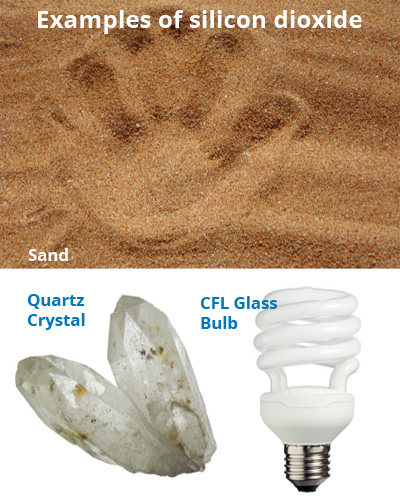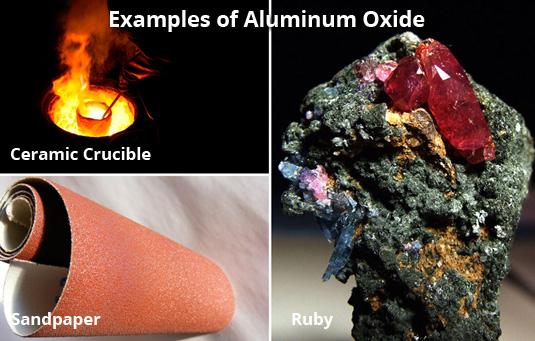Glass vs. Ceramic: What’s Better for Ozone Generators?
There is a debate within the ozone community. Some feel that glass should be the only material used to construct an ozone cell for producing medical and therapeutic-grade ozone, and that ceramic should not be used for these same applications. Others feel ceramic is the best possible material. This article is going to examine the different properties of ceramic and glass, and actually illustrate how it is not only safe to use ceramic for these applications, but that ceramic is a superior material to be used in all applications of ozone, including ozone therapy.

Glass Examples
First off, let's take a closer look at the elements we are actually comparing. Another name for glass is silicon dioxide, or in shorthand SiO2. As the shorthand implies, each molecule is arranged with one atom of silicon for every two atoms of oxygen. Silicon and oxygen are the two most abundant elements in the Earth's crust. In nature we know that common forms of SiO2 are found as quartz crystals, obsidian, and sand.
Ceramic is also known as aluminum oxide or Al2O3. This is arranged so there are two aluminum atoms and three oxygen atoms in each molecule. Aluminum is the third most common element in the Earth's crust, and corundum and bauxite are the most common forms of aluminum oxide found in nature. Rubies and sapphires are actually gem-quality corundum, with other trace elements giving them their color.
Hardness
According to Mohs' scale of hardness, quartz glass rates at 7 while aluminum oxide ceramic comes in two points higher at 9. Diamonds, which have a 10 rating, are only one point higher than aluminum oxide. The increased hardness that aluminum oxide ceramic provides is a better material mechanically, with its ability to withstand much more stress. This will help contribute to an even longer lifespan than the brittle quartz glass.
Oxidation
Both quartz glass and aluminum oxide ceramic are completely inert in a high oxygen and ozone environment. Oxygen will not react with either material due to each molecule (Al2O3 and SiO2) being fully oxidized. Fully oxidized means that the oxidation reaction has already taken place with both glass and ceramic, and nothing can contaminate the ozone supply. There is absolutely no evidence to support claims that ceramic will “leech” or “break down” the ceramic into the ozone supply. When it comes to ozone purity, ceramic provides the same purity level as glass because both are fully oxidized materials.
Heat Retention
Because of the low heat retention properties of aluminum oxide ceramic, it is able to withstand higher temperatures. This just shows how much more durable Al2O3 ceramic is when it is compared to SiO2. Since quartz glass has a melting point of 3,092 °F, it seems like it can withstand pretty high temperatures. This is partially true. When exposed to high temperatures, glass is susceptible to thermal shock. This thermal shock can occur along weak points in the glass, and can manifest itself at much lower temperatures than the melting point. This could potentially cause a crack or chip in the glass, which would destroy the cell.
The Al2O3 ceramic is not susceptible to thermal shock because it can withstand higher temperatures with a melting point of 3,762°F. The same ceramic material we use in the cells of the O3Elite is also used in high temperature crucibles for refining metals in blast furnaces. It can take the heat.
The ability to disperse heat is ultimately what makes ceramic better. Companies that market their glass cell ozone generators as “cold corona” are manipulating the truth. This is because heat is generated as a byproduct during the process of making ozone, no matter how it’s made. And because glass retains heat much longer than ceramic, a glass ozone cell should never be described as cold corona. The reason this is a problem is because the high temperatures retained in the glass make the ozone concentrations very unstable, especially at higher gamma levels. Since ceramic has the unique property of dispersing heat much more efficiently and will produce stable levels of ozone without a cooling system, this makes it a much better media for the cold corona method.

The growth of ceramic with ozone
The aforementioned properties contribute to the overall integrity of the cell and make ceramic a far better choice than glass. This is why more companies are making the switch from generators with glass cells to ceramic for their ozone production method. Because large pharmaceutical and semi-conductor industries require ultra-precise, high concentration, high output ozone generators, they use ceramic. Glass will not meet the needed specifications and is prone to malfunction under high stress industrial applications.
Other industries that use ceramic cell ozone generators include water treatment, bio-tech, and aerospace. These companies include NASA, Boeing, Oak Ridge National Laboratory, Johnson and Johnson, and the Howard Hughes Medical Institute. These companies all use the ceramic cell technology for ozone, and because they are huge industry leaders, we know that they need the highest quality equipment.
High quality ozone is the goal. I hope it is clear from this article that while both glass and ceramic cells are acceptable methods for making ozone that can be utilized for therapy, ceramic is better. If you are still planning on purchasing a glass cell ozone generator, at least make sure the company does not use lead in their quartz glass cells. Lead is used as a hardener to make quartz glass less brittle, but could potentially cause serious health problems if the cell was to break.
“Manufacturing is more than just putting parts together. It's coming up with ideas, testing principles and perfecting the engineering, as well as final assembly.” I think this quote by James Dyson sums up what we have been talking about in this article, and how important it is for companies to push themselves to provide the highest quality products for their customers. Just because something is working, that doesn't mean it can’t be improved upon. Innovation is what pushes us to find creative solutions. With any design there is always room for improvement, and although glass cells worked great in the past, ceramic is a better material suited for current and future applications. This durability is why ozone production will be relying on ceramic well into the future.
References
- http://www.makeitfrom.com/material-properties/Alumina-Aluminum-Oxide-Al2O3
- http://www.chemistryexplained.com/Ge-Hy/Glass.html
- http://geology.com/minerals/mohs-hardness-scale.shtml
- http://chemed.chem.purdue.edu/genchem/topicreview/bp/ch9/redox.php
- CRC Handbook of Chemistry and Physics, 96th Edition (15 Jun 2015)
- Handbook of inorganic chemicals. Patnaik, Pradyot. Vol. 28. New York: McGraw-Hill, 2003.